Quarantining at Camphill: Distance, Warmth, and the Unknown Future

By Matthew Goeztke and Diedra Heitzman
This article was originally published in the Fall 2020 issue of Communities Magazine, which features many other compelling stories on how other intentional communities have responded to the pandemic. You can download a copy of the magazine here.)
Matthew writes:
I’m a 20-year-old Michigan native seeking to connect with the natural world. Previous to my arrival at Camphill Village Kimberton Hills in Penn-sylvania I lived downtown in a major city with my companion, a rabbit, in a windowless bedroom. I worked at a bakery in an international marketplace down the block from my apartment. I was on my way out the door from that job to do a five-month internship in a farming community, when COVID-19 struck. My strategy from then on was finding fellow workers to cover my remaining three shifts so I could avoid interacting with 100-plus people a day, and immediately head to a rural location.
Being quarantined upon arrival to Camphill is comparable to my first assigned task: sprucing up a tree patch. On the first day, I couldn’t see the whole mess I was working with. Terribly overgrown thorn bushes towered overhead. Fallen branches and decaying logs scattered the forest floor. Twisting vines tangled around saplings, lowering their odds to survive and thrive. With my gloves and clippers I began to face the physical work of chopping wild rose bushes at their bases, and dragging logs into piles. I began seeing the results of my labor after the passing of a couple days.
Inadvertently, my mind began organizing the cluttered thoughts which occupied it as solitude advanced. After nine or 10 days of trimming, pulling, cutting, and ripping out the unneeded, potentially harmful things growing and rotting amidst the woodland, the mess transformed into a clearer and open scene. Similarly, the fog in my brain was dissipating.
``Every person, plant, and creature I’ve encountered has centered me in thinking positively, in appreciating beauty in the details of life.``
My being here is a manifestation come true. Before knowing this type of place existed, I wrote about moving to a farm with my rabbit and being greeted by friendly faces, shown to a bedroom with a view, and a hot meal waiting on the table. Each of those things happened within 10 minutes of pulling up to the door. There have been people every step of the way who check in with me to see if my needs and desires are being met. I carried a mask for times I would be involved in conversations or gardening in the same vicinity as people, while being sure to maintain proper distance. The folks here genuinely concern themselves with my well-being and want to know how I’m getting on. It is unmistakable that kindred spirits surround me. Every person, plant, and creature I’ve encountered has centered me in thinking positively, in appreciating beauty in the details of life.
The idea that crystallized for me is that I choose which things will continue to grow and which will be pruned in nature and in life.
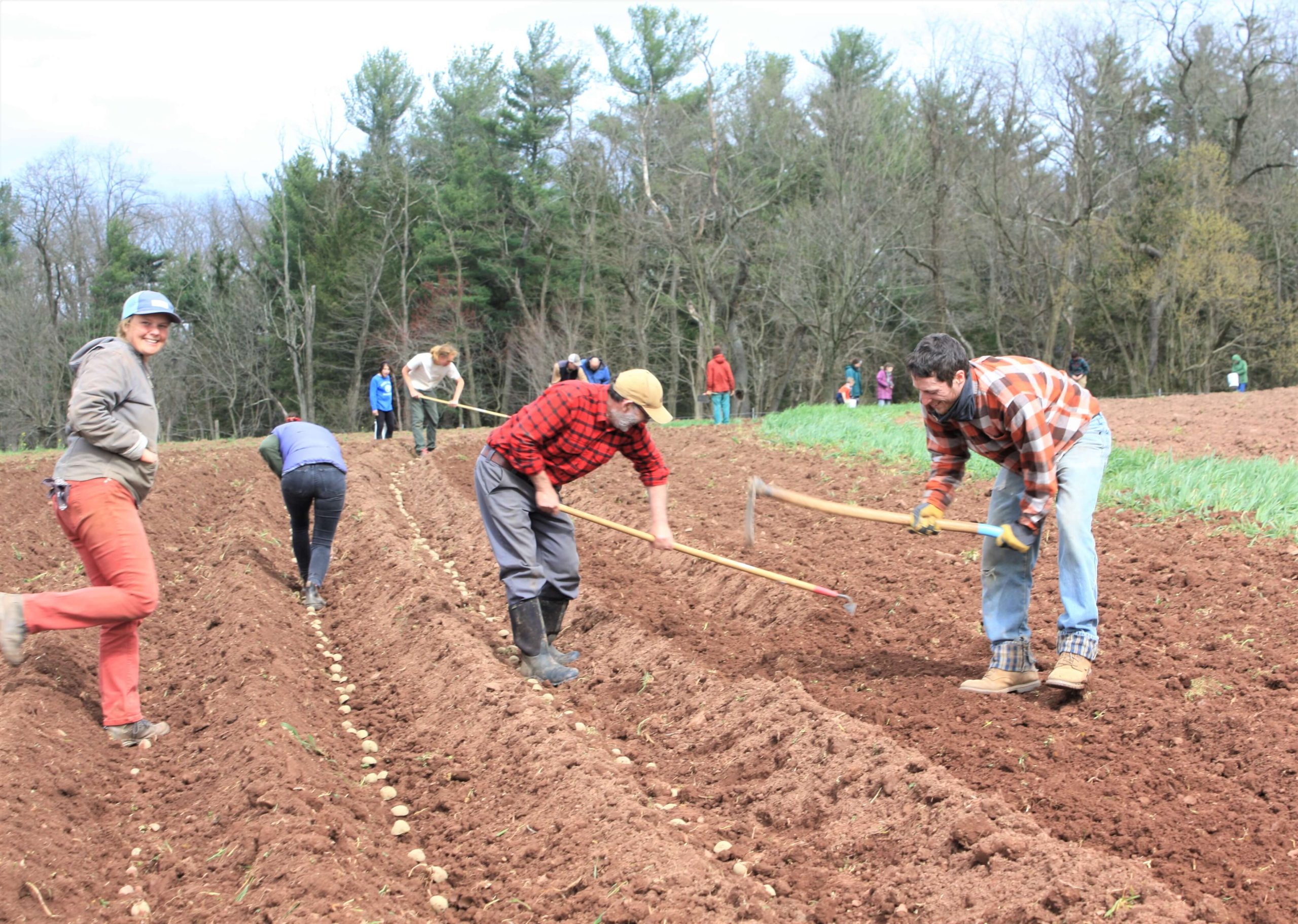
Finding A New Rhythm
Diedra writes:
Slow down, shut down, close up, open. What is our temperature today? Warm? Overheated? Cool? The 110 or so people in our inclusive Camphill community are used to living, working, and celebrating together. Are we a closed community? Certainly not up until sometime in March of this year, when, like the world at large, our permeable boundaries became nearly impenetrable. Our Café closed; our day volunteers, tour groups, concert audiences, craft store customers, and our friends and families from outside the community were told: stay away. Luckily, nearly all the tasks we take on together are deemed essential: land work and caring for each other. Our or- chard, raw milk grass-fed dairy, herb gar- den and processing, estate work (tree and wildflower planting, bluebird enabling, beekeeping, grass mowing, sign making, invasive weeding), and our large CSA garden—all using biodynamic practices— could keep us busy and productive.
We could continue to buy cooperatively from our neighborhood grocer, Kimberton Whole Foods, pick up mail at the local post office, and drive in at our area bank and pharmacies. We could keep picking up surplus food from Kimberton Whole Foods and nearby Trader Joe’s and drive extras to a local foodbank. We could close our craft studios and do art work at home, continue to have a rich and supportive life in our households, and take walks on paths and roads within our village. We could take our health concerns to two nurses who are long-term residents here.
Socially Distancing
But what about that temperature? Can those of us, the nearly half of our adult population who have intellectual and developmental challenges, keep to physical distancing? Can we learn to be farther away from each other and still closer to friends in other ways? Can Ina bear to forego hugs from everyone she meets? Can friends and families from outside the community understand our need to isolate—so foreign to our usual lives? Can we forego vacations, trips here and there, see each other less regularly, and have fewer meetings? We have answered yes. We have even managed to keep our social cohesion relatively intact despite different opinions about the efficacy of various public health advisories, theories, projections, and concerns for well-being beyond our community.
The continuum of opinions of those who want to shelter in-home (we live in this house, we all stay here) and those who are OK with some in-village mixing (at six feet or more), has been recognized and blessed. Quarantining of those who were away before the “distancing” started was quickly arranged.
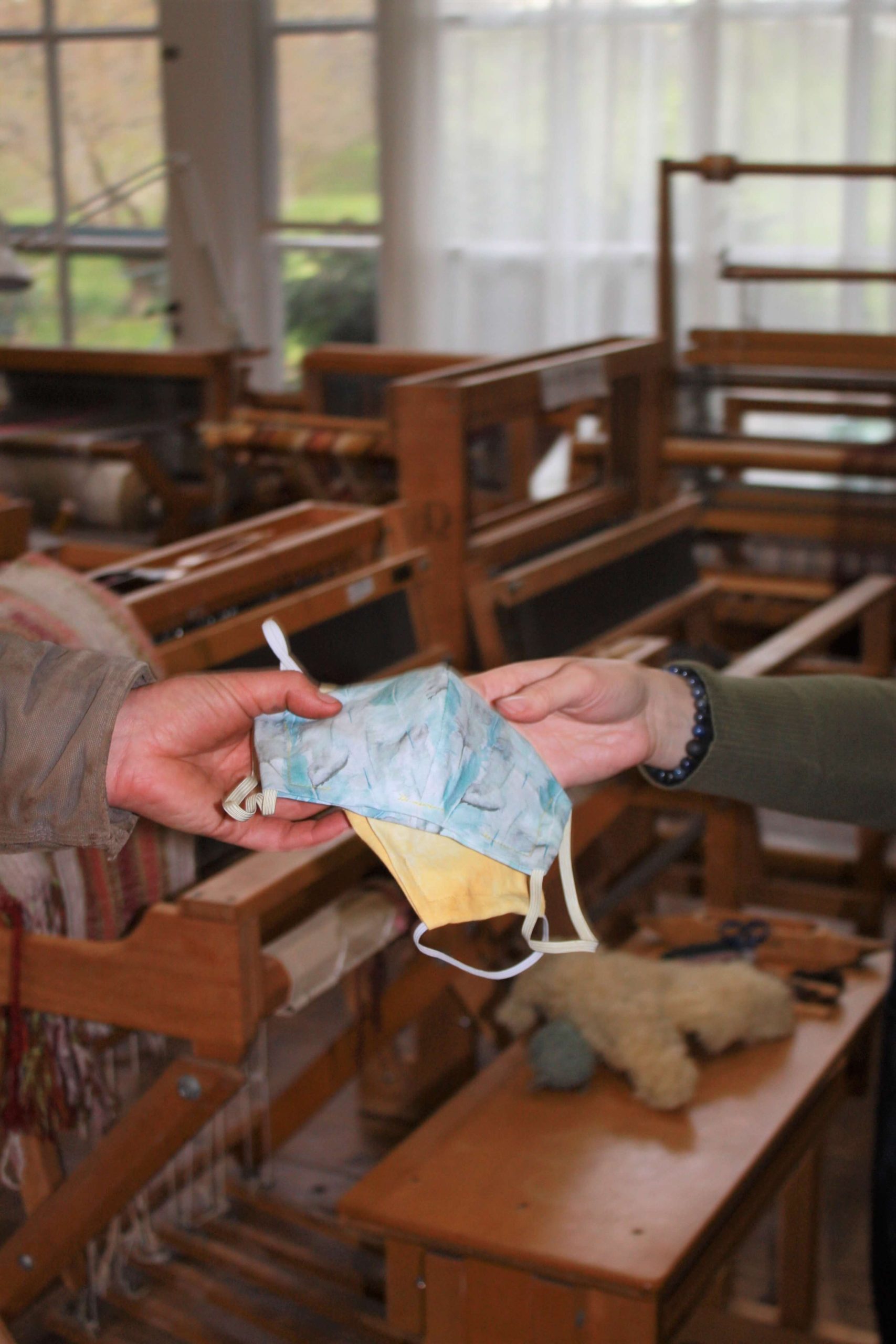
Remembering Our Shared Mission
We have managed, at least at this writing, to stay respectful and caring of each other to the degree we can. We had a good starting point to address a crisis: a shared mission, a nearly 50-year history of community life, and horizontal inclusive organizational structure. A managing group has delegates from each diverse enterprise or activity within the community. Three people were quickly chosen as the “Covid” group to help arrange the new normal, and followed up with long-term resident approval. Our Covid group includes our Village Coordinator/Executive Director, a resident BSN nurse, and a person in admissions who has a particular ability to get details communicated well. So many bits of info, videos, talks, news releases to integrate!
``We had a good starting point to address a crisis: a shared mission, a nearly 50-year history of community life, and horizontal inclusive organizational structure. A managing group has delegates from each diverse enterprise or activity within the community.``
Each of us is as likely as anyone to have our “bubble,” a preferred theory, concern, worries. We have continuous work to do to share our concerns and respect our differences. That requires serious and respectful conversations. Many of us have developed respect for each other over time, but fewer in-person meetings can yield hasty emails or texts that “land” in ways different from how they were intended. Long emails can be scanned too quickly—life is busy! How can we create times of listening deeply, of putting aside our perspectives and hearing each other, learning from each other while still doing daily tasks? Doesn’t this seem like a microcosm of our country and world? We seek times of contemplation, study, and meditation, especially of Rudolf Steiner’s work, which is the basis of our community. We hope to recognize the deeper meaning of this world experience, and possibly contribute to a better future.
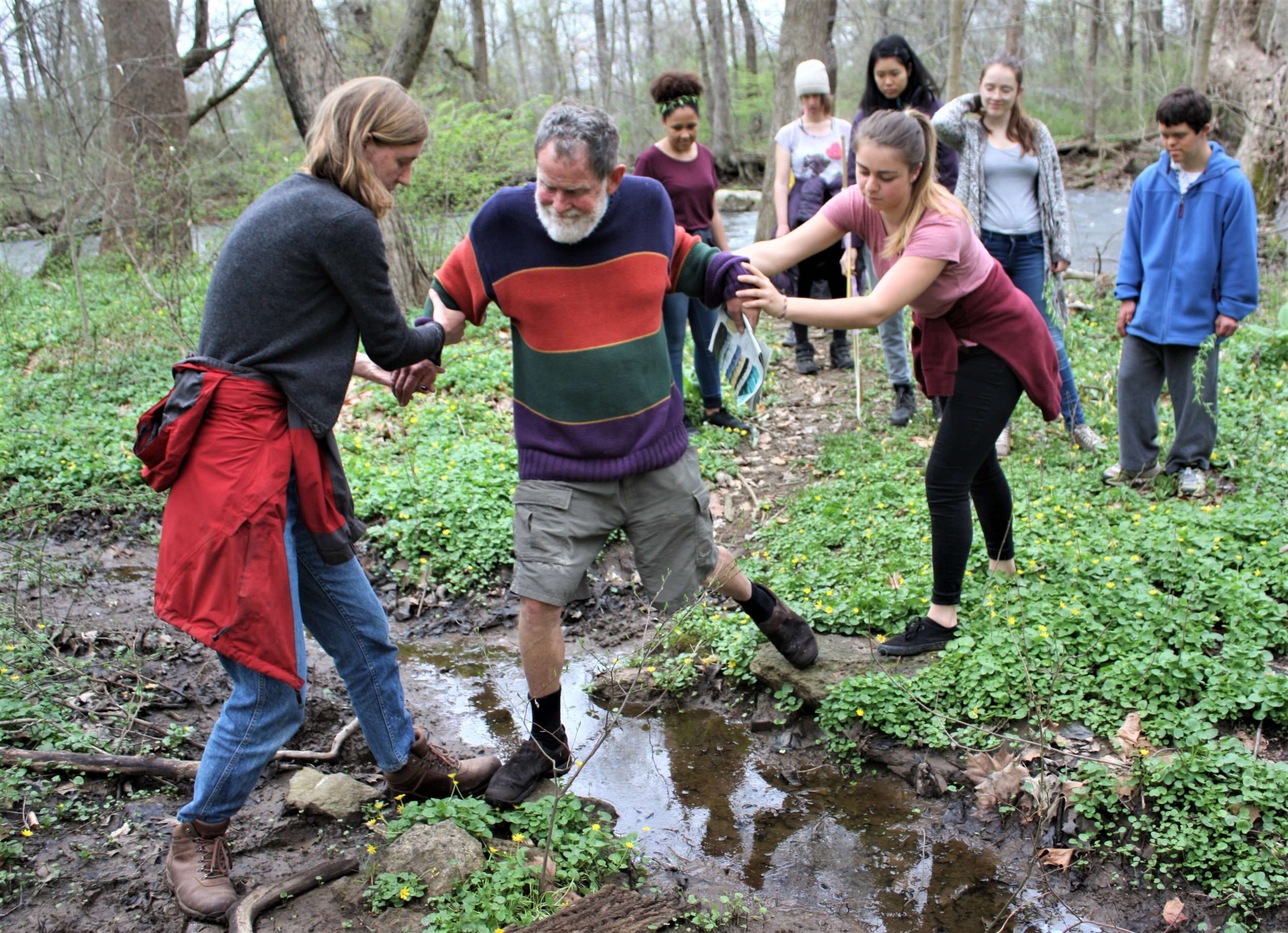
International Barriers
We regularly have over 20 new people from many countries come volunteering each year. Lately, they have included people from China, the Philippines, Germany, England, Botswana, Korea, India, the US, and so on. Some come in on B visas, some on student visas to study in our Camphill Academy (camphill.edu). Long-term members are from the US, Italy, England, Denmark, China, Latvia, Scotland, and Germany. Camphill communities exist across the world, begun by refugees from central Europe during WWII, and we have remained committed to multicultural weaving of destinies.
It didn’t take the pandemic to bring concern that we might not be able to welcome people from other parts of the world. The US borders were already becoming harder to traverse. Then, when the pandemic was growing, the young German volunteers were suddenly recalled to Germany. Many of these young volunteers felt committed to be here in this community for a year and wished to see their commitment through. Each one felt their own connection to the people and animals that they have created relationship and community with in this time. After much emailing back and forth, soul searching, and figuring out how to interpret this layer of directive, two of these wonderful volunteers did opt to return to Germany, and the others chose to make the personal stand and, of their own free choice, opted to stay.
Peace Corps members were being called back to the US, and WWOOFers no longer have possibilities to go abroad. Our intentional community, with its gardens and farm, beckons.
One wrote, “I am doing international voluntary service in Kimberton Hills, I am 25 years old and from Germany. At the beginning of April it was said that all German volunteers who started their voluntary service with a state organization should come back to their home country. It was a strange feeling to be torn out of my life; the return journey could endanger me more and life in Germany would be no safer. I can’t do better than in a Camphill like the one in Kimberton. We have organic food from our own farming, as well as dairy products and bread. For me there was no reason to start the return journey; I canceled my contract with my organization.”
Suddenly we have an influx of applications for short-term service opportunities: Peace Corps members were being called back to the US, and WWOOFers no longer have possibilities to go abroad. Our intentional community, with its gardens and farm, beckons. That’s where Matthew, who began this article, came in.We are grateful that our way of life, established and evolving as it is, has long-term experience with organizing tasks and supporting each other. Pivoting quickly has been relatively seamless: new daily schedules, a new CSA pick-up process, complete with boxed shares, masks, and deliveries to cars of the many members beyond our community, and regular communication from and with our Covid committee.
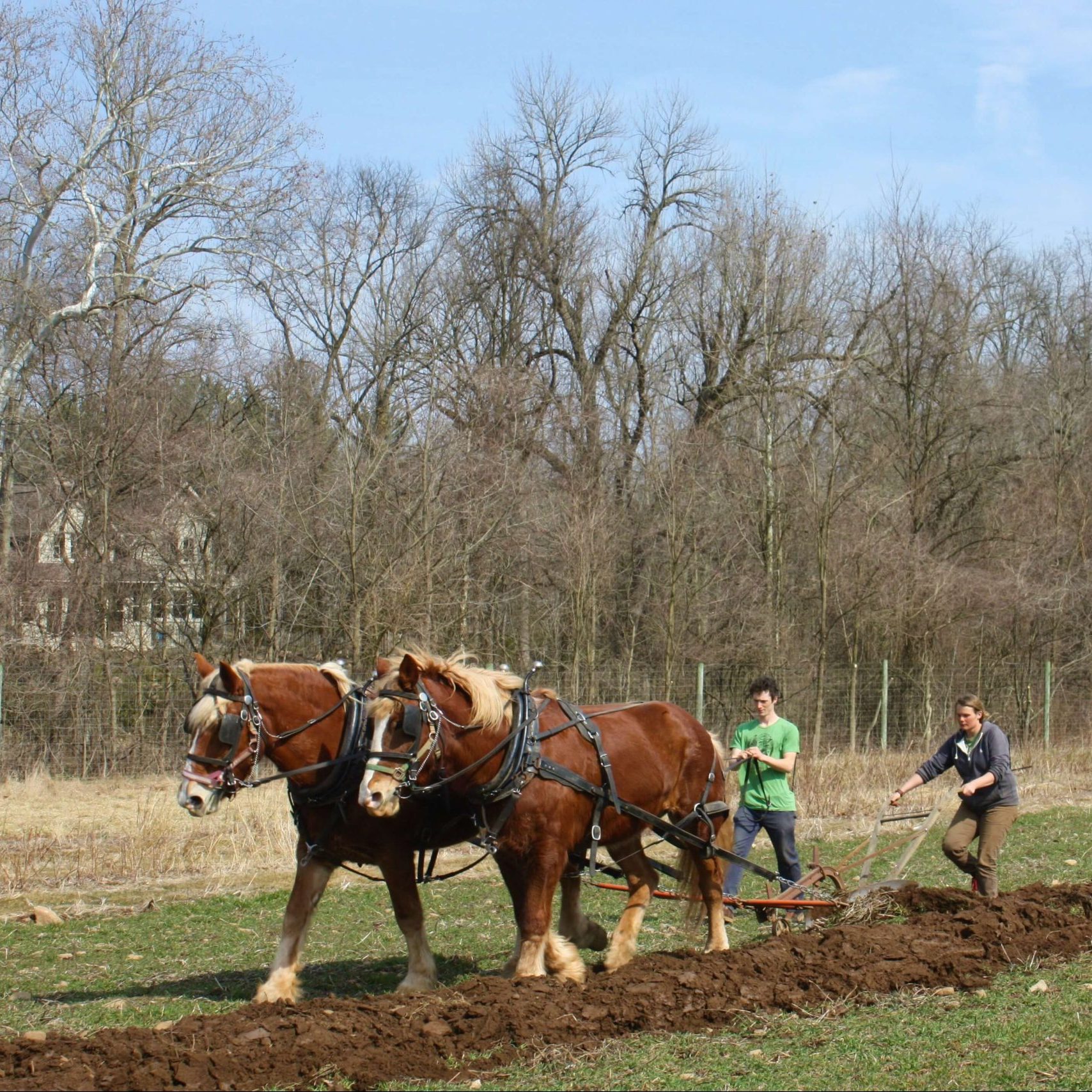
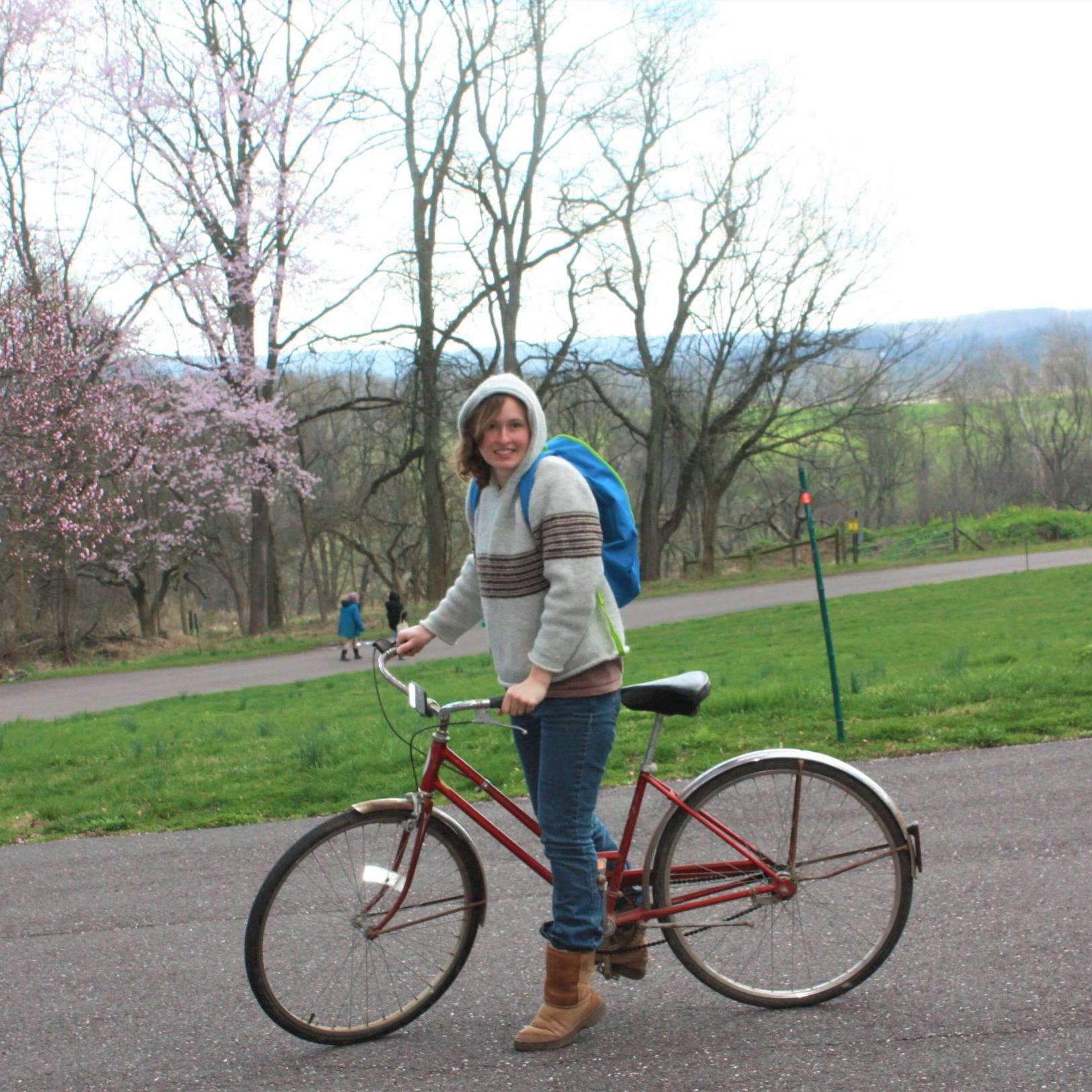
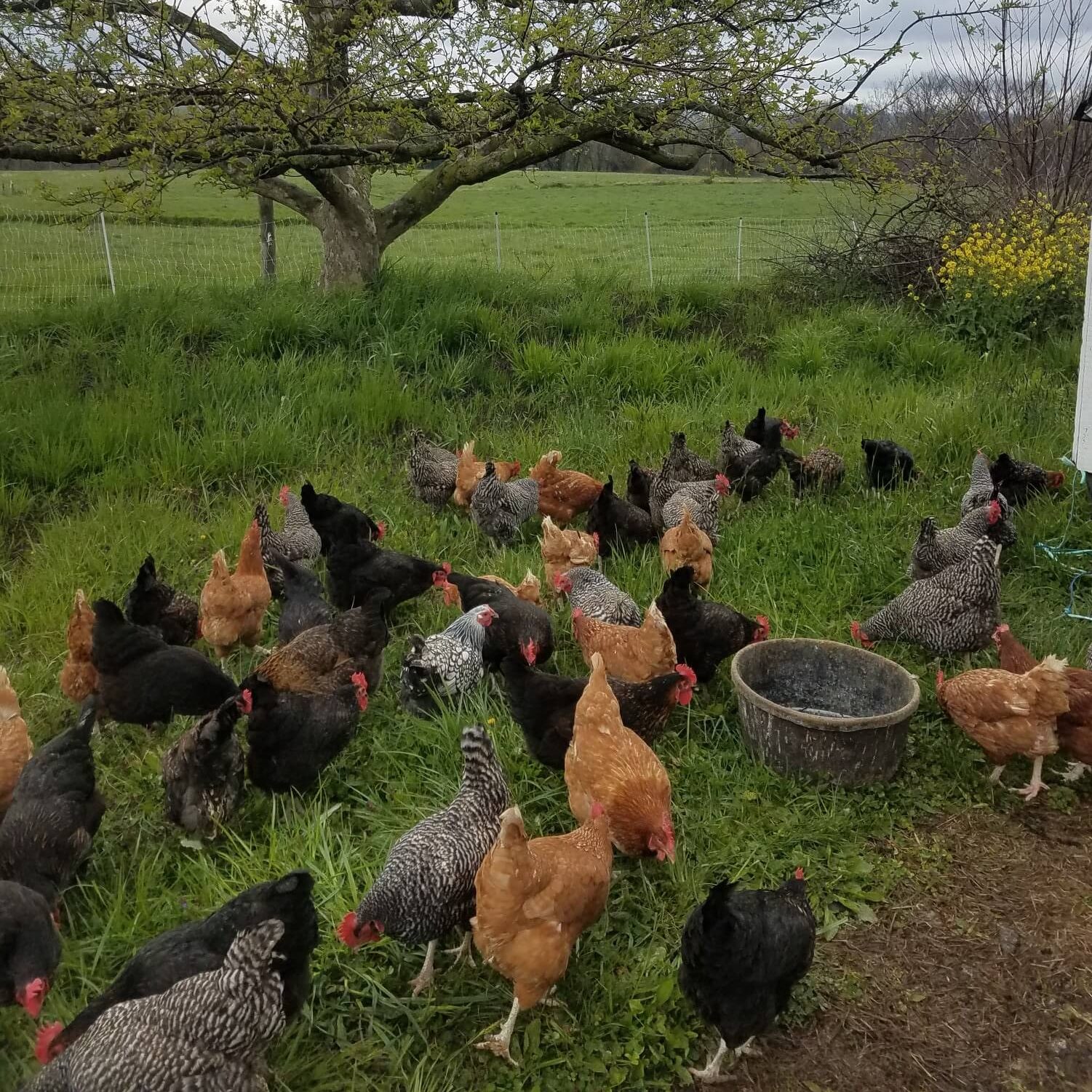
Hope And An Unknown Future
At this moment none of us truly knows what this will mean going into the future. We know that many in the unique population with whom we share our lives have potential health risk factors. We are aware of the need to take this situation seriously, practicing physical distancing, developing awareness of personal boundaries and yet also of the need to maintain social warmth and caring for each other.
We worry about the world, gaze at the clear skies, listen to the birds, put our hands on the plow, so to speak, and give thanks that we are here, in a beautiful burgeon-ing spring. What can come next? Will our model of a caring, ecologically conscious, income-sharing community stay healthy enough to continue to help others? Will the world suffer unimaginably?
We see with joy how other budding communities are forming, with folks helping each other as jobs fade and incomes decrease. We hope soon to be able to relax our boundaries and welcome others to experience daily life with us. But in the mean-time, we are doing well!
Diedra adds:
Post writing the article, our community supported Black Lives Matter by sending several hundred sandwiches we made with Sweetwater, the village-partnered bakery’s bread, donations from Trader Joe’s, and lots of veggies from our garden to the protests in Philly. While our health-challenged population makes it harder for us to be in crowds, we have ‘unlearning racism’ and racial justice as topics for village study and further action.
Diedra Heitzman, a community member since 1983 and lifelong student of anthroposophy, now administers the Camphill Academy in Kimberton Hills. She has undertaken a long line of various community tasks including homemaking with her three (now grown) children, her husband Michael, and friends with and without so-called disabilities. She has enjoyed administering, celebrating, and generally helping out where needed. She is currently managing a building project and delighting in three grandchildren, one of whom lives next door.
Matthew Goeztke is currently enjoying the moment, and invites you to do the same. Breathe in, breathe out. He says: “Grand Rapids made me. Grandma praised me. Thank you to the woman who saved me and my parents who raised me. The Natural world is my inspiration. I’m forever thankful to the supporters in my life. My partner Divine and I just celebrated one year together. Nimbus is my pet rabbit who lives the high life. My favorite foods are raspberries and chocolate.”